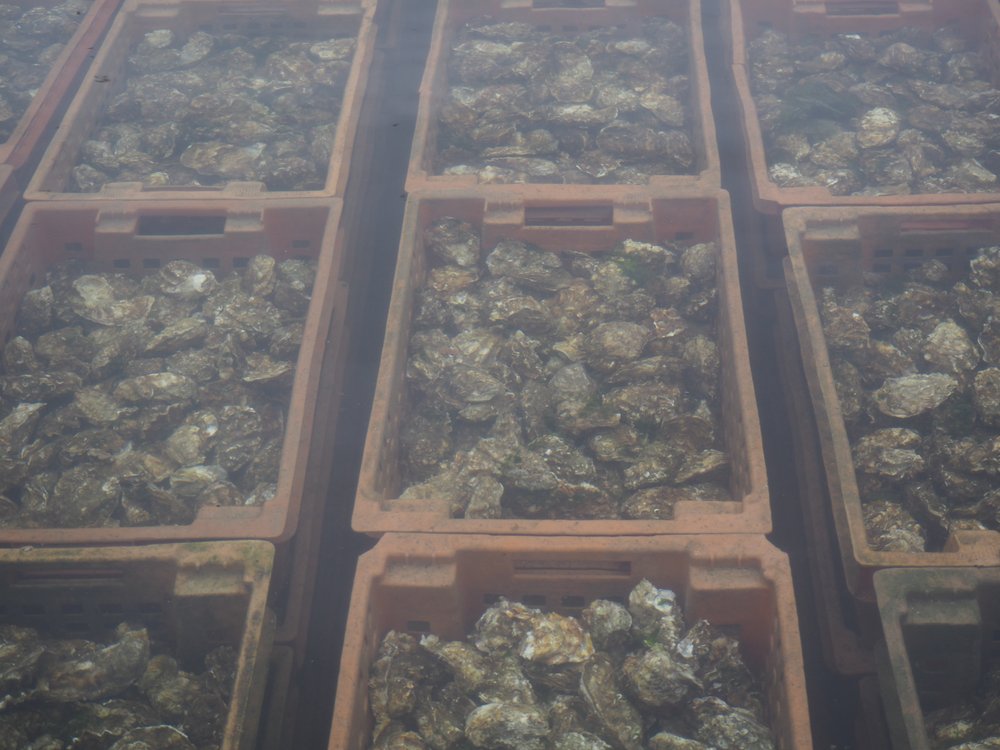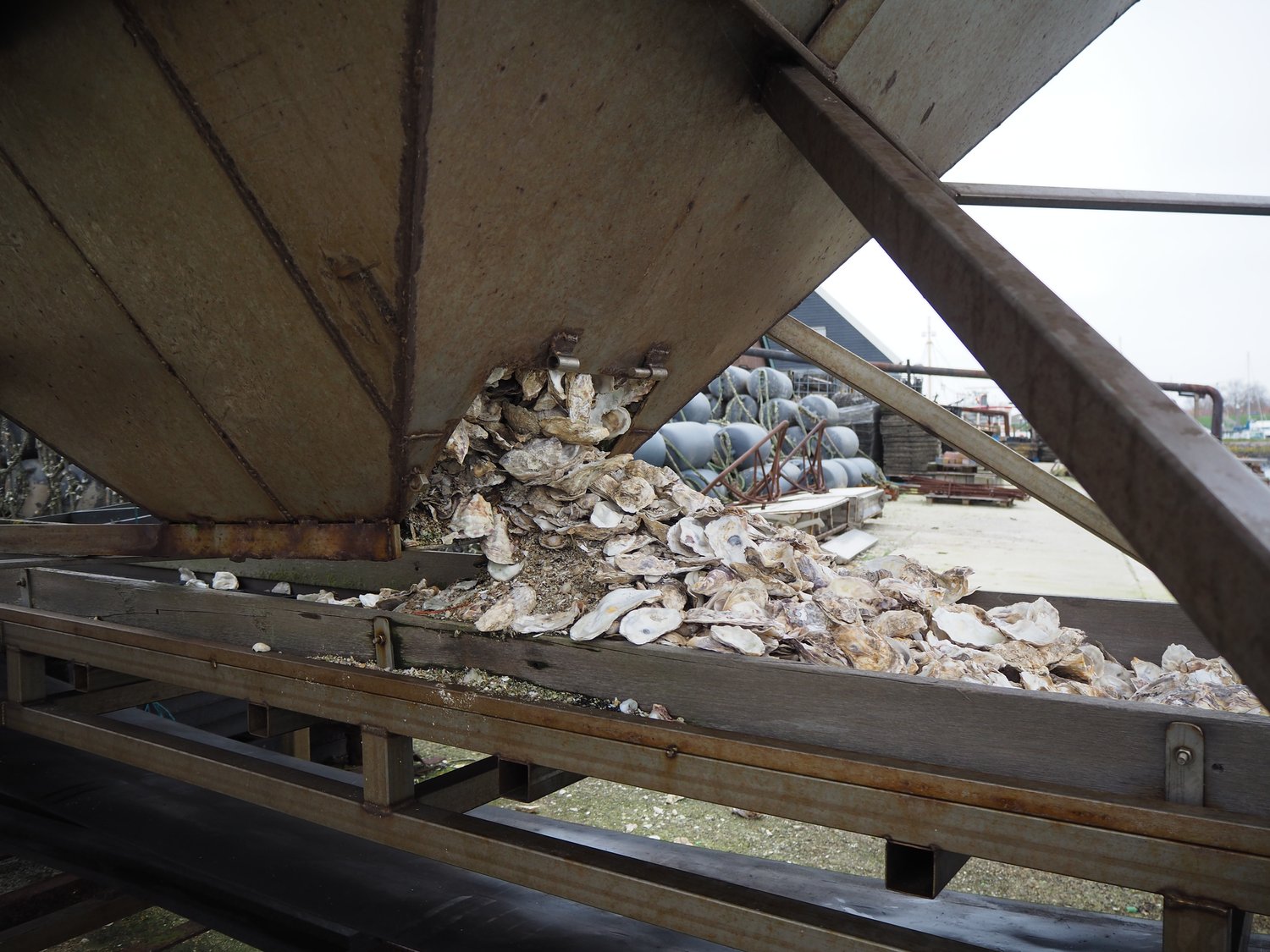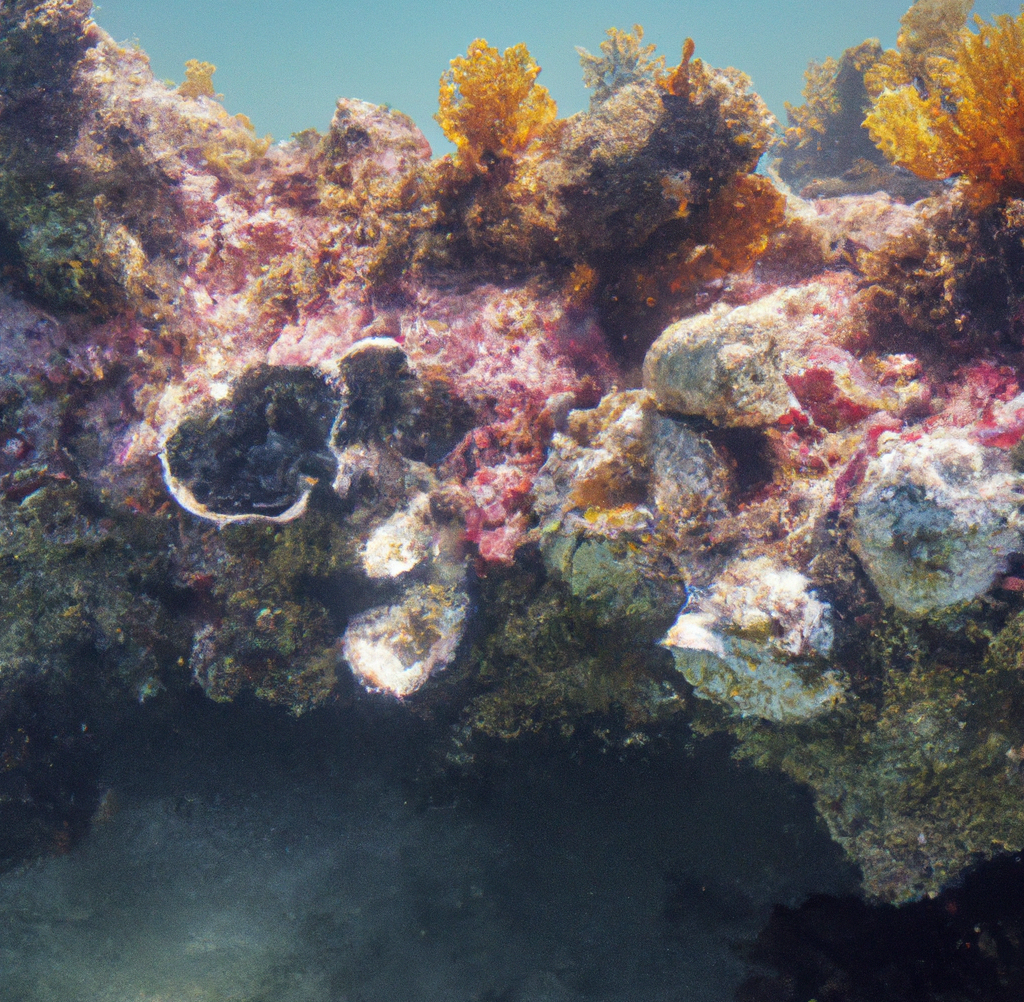Today, the aquaculture industry supplies most of the oysters on the market because we have depleted the population in the wild, with drastic consequences for both the marine and terrestrial environment.

Overfishing has been widely documented and is still going on. The impact on the oyster population has been severe with many species being brought to near extinction.
Why? Because being sessile, Oysters are an easy catch that tastes good. Oysters are perfect stocks of minerals, vitamins, antioxidants and omega-3. In line with an unfair economic system, the decrease in availability gave oysters a ‘delicacy’ status which, together with claims of their aphrodisiac properties increased demand and price, and encouraged more fishing.
Once consumed, oyster shells are usually thrown away and become trash.
Little do people know how precious these shells are to oyster larvae in nature. These shells are their natural substrate for settlement and metamorphosis!
So not only are we decreasing the oyster population by overfishing, but we are also hampering production by wasting oyster shells.

Did you know that many areas like the Chesapeake Bay have run out of oyster shells for their restoration projects?
That’s why the shells should be collected, treated, and brought back to grow oyster larvae on them (and there are in fact several oyster collection projects taking place)
However, oyster shells don’t only become waste. Their uses are becoming more and more varied…
The more oysters we consume, the more oyster shells we should be able to collect.
If so many oysters are eaten, then why have oyster restoration projects been struggling to find Oyster shells?
The high calcium carbonate content of the shells finds application in cement production, glass making, food preservation and even cosmetics!
Oyster shells have now become a valuable material for humans. This is not good news for oyster larvae trying to find a substrate to settle on in nature! Even worse, the current acidification of the ocean affects oyster shells production during metamorphosis and growth making them weaker and more vulnerable to predators.
The supply of oysters to be consumed is indeed not in danger. However, oysters are key invertebrates on which the global health of our ocean depends, simply because they are ocean cleaners. So we need them back in nature, covering the ocean floor.
Restoring Oyster reefs will take care of a good part of the nutrient pollution resulting from excessive agriculture and industrial activities, and it will provide much-needed shelter and food resources to struggling marine fauna and flora.

The health of the planet depends largely on the ocean, so oyster restoration should be a key concern that is talked about much more.
We are here to support that. Will you help us spread the word?